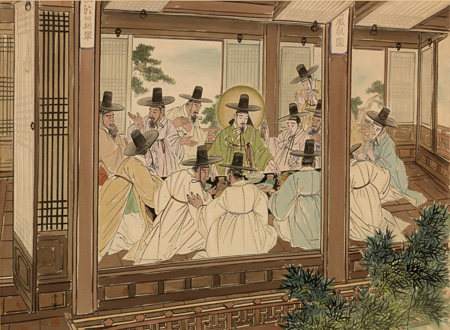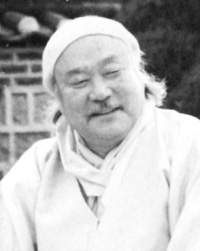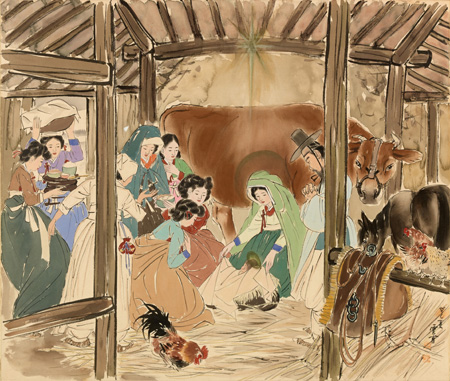- California Assembly OKs highest minimum wage in nation
- S. Korea unveils first graphic cigarette warnings
- US joins with South Korea, Japan in bid to deter North Korea
- LPGA golfer Chun In-gee finally back in action
- S. Korea won’t be top seed in final World Cup qualification round
- US men’s soccer misses 2nd straight Olympics
- US back on track in qualifying with 4-0 win over Guatemala
- High-intensity workout injuries spawn cottage industry
- CDC expands range of Zika mosquitoes into parts of Northeast
- Who knew? ‘The Walking Dead’ is helping families connect
Exhibition highlights faith-inspired paintings
Exhibition highlights faith-inspired paintings of late Kim Ki-chang
By Baek Byung-yeul
Zeng Fanzhi, the influential Chinese contemporary artist, is perhaps best known for his 2001 work, “The Last Supper,” where he recreated the Leonardo Da Vinci painting by replacing Jesus and his disciples with young Communists. Taken as a commentary on Communist China’s emergence as the engine of global capitalism, the work fetched more than $23 million at an auction in Hong Kong.
It remains to be seen whether the reinterpretation of Christian art will prove as important to Zeng’s legacy as it was to the late Kim Ki-chang (1913-2001), another iconic Asian artist most famous for his paintings of Jesus set in the Joseon Kingdom (1392-1910).
While Zeng seems to use Christian elements as a template for his social and cultural allegory, Kim’s paintings were more of a straightforward representation of his faith. A man who became deaf and partially mute after suffering from typhoid at the age of eight, Kim said he depended on religion to overcome his physical difficulties and plow through the discrimination he faced as he tried to establish himself as a painter.
Celebrating the centennial anniversary of Kim’s birth, the Seoul Museum has opened a special exhibition featuring some of his definitive works. The program is highlighted by Kim’s “Life of Jesus” series he completed during the Korean War (1950-53), where he painted 30 different moments of the life of Christ.
Kim, widely called by his penname “Woonbo,” was one of the most influential Korean painters of the modern era, credited for updating Korean traditional ink paintings to the 20th century.
In his paintings, Jesus and his disciples are wearing “hanbok,” or traditional Korean clothing, and “gat,” the cylindrical traditional hats. Maria is portrayed in a hanbok too.
According to his biography, Kim was inspired by a dream to start the series of painting Jesus.
“One night in my dream, I went down to a tomb holding the lifeless body of Christ. I couldn’t bear to leave him there and came up to the ground again, still holding him and crying bitterly. Then someone shook me awake,’’ Kim wrote.
Seo Sung-rok, an Andong National University professor and art critic, said Kim’s paintings were embraced by Koreans regardless of faith, as during a turbulent time in the country’s contemporary history, people could relate to the image of suffering and sacrifice.
Seo also said: “the naturalizing and localizing of early Christian art has been done by artists around the world for a very long time. Kim’s work is unique because it was a direct attempt at propagating Christianity more to Koreans.”
Including the “Life of Jesus” series, some 100 works by Kim are on display at the museum.
The exhibition runs through Jan. 19, 2014. To get the venue, take bus nos. 1020, 1711, 7016 or 7018 at exit 3 of Gyeongbokgung Station, subway line 3, and get off at the entrance to Jahamun Tunnel. Tickets cost 5,000 won for children, 7,000 won for students and 9,000 won for adults. For more information, call (02) 395-0100 or visit www.seoulmuseum.org.














